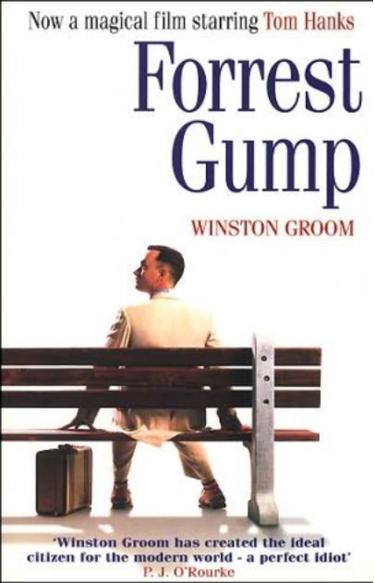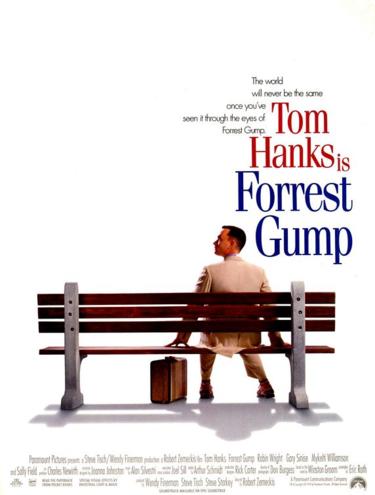Ten Months After Its Release, Was Paramount Pictures Over $60 Million in the RED on Forrest Gump?
Here is the latest in a series of examinations into urban legends about movies and whether they are true or false. Click here to view an archive of the movie urban legends featured so far.
MOVIE URBAN LEGEND: Ten months after the release of Forrest Gump, the studio behind the film ostensibly were in the HOLE over $60 million on the film!
In 1986, Winston Groom wrote a novel called Forrest Gump…

It didn’t do particularly well, but in the early 1990s, Robert Zemeckis and Paramount Pictures optioned the book for a movie. He agreed to a $350,00 up front fee, plus 3% of the net profits of the film.
The movie then went on to become one of the biggest movie hits ever upon its release in July of 1994.

The film won Best Picture, Best Director and Best Actor (Tom hanks) at the Academy Awards, and by May 1995, it had sold over $600 million in ticket sales worldwide (and the VHS home movie had just recently been released).
However, by May 1995, Groom had yet to be paid ANYthing past his initial salary!
You see, Winston Groom, along with a few other people involved in the film (including the screenwriter, Eric Roth, and producers Wendy Finerman and Steve Tisch), only got percentages of the films’ NET profits, and in May of 1995, Paramount had yet to acknowledge that the film had actually MADE money yet!
Tom Hanks and Robert Zemeckis ALSO had percentage deals, but THEIR deals were off of the GROSS profits of the film, so by May 1995, each man had earned roughly $30 million for the film. In fact, Hanks and Zemeckis’ pay-outs were partially what were keeping the other four people from making any money.
Paramount’s position is that their accounting practices were completely valid.
They claimed that as of December 1994, after splitting the ticket sales with the movie theaters, they took in $191 million on the film, then $62 million went to Hanks and Zemeckis (net now $129 million), $50 million went to paying off production costs of the movie (net now $79 million), $74 million went to promoting the film (net now $5 million), $6 million went to interest payments on the financing of the film (now showing a net LOSS of $1 million) and then $62 million for distribution expenses, resulting in a net loss of roughly $63 million!!
Groom felt that this was bogus, and hired a lawyer to assert as much. Paramount responded by giving him another $250,000 (on top of his $350,000 original fee) as an “advance against future profits,” stating that they were sure that once the home video sales and the additional ticket sales came in, the movie would make a sizable net profit.
Paramount and Groom settled their lawsuit for an undisclosed sum. Obviously, “Hollywood Accounting” is always going to be pretty iffy, but the case of Forrest Gump’s net loss is still an extreme example.
The legend is…
STATUS: True, Depending on Your Accounting
Thanks to Bernard Weinraub of the New York Times for the information behind this legend.
Feel free (heck, I implore you!) to write in with your suggestions for future installments! My e-mail address is bcronin@legendsrevealed.com.






Groom is far from the only person ever cheated by creative accounting in film-making, where films like Indiana Jones & The Last Crusade have supposedly not made any money ever. He was just the most vocal.
“They claimed that as of December 1994, after splitting the ticket sales with the movie theaters, they took in $191 million on the film, then $62 million went to Hanks and Zemeckis (net now $129 million), $50 million went to paying off production costs of the movie (net now $79 million)”
You’re missing something here; when they pay out $62 mil to Hanks and Zemeckis, that is correctly removed from the profit. However, that $62 mil is then also added to the “costs” of the film. Essentially, that $62 mil has to paid off twice. And, once $124 mil is brought in to pay that off, they will have made an additional percentage of that.
This is just one of the ways that they use in order to never have to pay net profits.